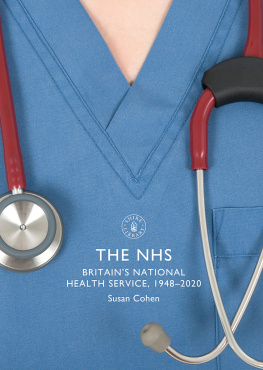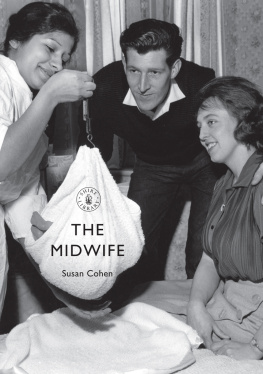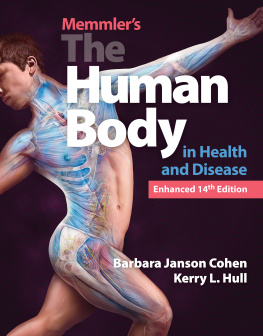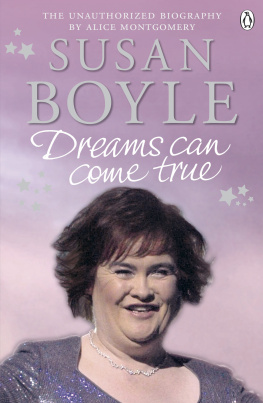Susan Cohen - The NHS: Britains National Health Service, 1948–2020
Here you can read online Susan Cohen - The NHS: Britains National Health Service, 1948–2020 full text of the book (entire story) in english for free. Download pdf and epub, get meaning, cover and reviews about this ebook. year: 2020, publisher: Bloomsbury, genre: Politics. Description of the work, (preface) as well as reviews are available. Best literature library LitArk.com created for fans of good reading and offers a wide selection of genres:
Romance novel
Science fiction
Adventure
Detective
Science
History
Home and family
Prose
Art
Politics
Computer
Non-fiction
Religion
Business
Children
Humor
Choose a favorite category and find really read worthwhile books. Enjoy immersion in the world of imagination, feel the emotions of the characters or learn something new for yourself, make an fascinating discovery.
- Book:The NHS: Britains National Health Service, 1948–2020
- Author:
- Publisher:Bloomsbury
- Genre:
- Year:2020
- Rating:5 / 5
- Favourites:Add to favourites
- Your mark:
- 100
- 1
- 2
- 3
- 4
- 5
The NHS: Britains National Health Service, 1948–2020: summary, description and annotation
We offer to read an annotation, description, summary or preface (depends on what the author of the book "The NHS: Britains National Health Service, 1948–2020" wrote himself). If you haven't found the necessary information about the book — write in the comments, we will try to find it.
The NHS: Britains National Health Service, 1948–2020 — read online for free the complete book (whole text) full work
Below is the text of the book, divided by pages. System saving the place of the last page read, allows you to conveniently read the book "The NHS: Britains National Health Service, 1948–2020" online for free, without having to search again every time where you left off. Put a bookmark, and you can go to the page where you finished reading at any time.
Font size:
Interval:
Bookmark:


SHIRE PUBLICATIONS
Bloomsbury Publishing Plc
Kemp House, Chawley Park, Cumnor Hill, Oxford
OX2 9PH, UK
1385 Broadway, 5th Floor, New York, NY 10018, USA
E-mail:
www.shirebooks.co.uk
This electronic edition published in 2020 by Bloomsbury Publishing Plc
SHIRE is a trademark of Osprey Publishing Ltd
First published in Great Britain in 2020
Susan Cohen, 2020
Susan Cohen has asserted her right under the Copyright, Designs and Patents Act, 1988, to be identified as Author of this work.
All rights reserved
You may not copy, distribute, transmit, reproduce or otherwise make available this publication (or any part of it) in any form, or by any means (including without limitation electronic, digital, optical, mechanical, photocopying, printing, recording or otherwise), without the prior written permission of the publisher. Any person who does any unauthorised act in relation to this publication may be liable to criminal prosecution and civil claims for damages.
ISBN: 978-1-7844-2482-4 (PB)
ISBN: 978-1-7844-2480-0 (eBook)
ISBN: 978-1-7844-2479-4 (ePDF)
ISBN: 978-1-7844-2481-7 (XML)
Shire Publications supports the Woodland Trust, the UKs leading woodland conservation charity.
COVER IMAGE
Front cover: Modern NHS uniform and stethoscope (Studio Light & Shade/Alamy). Back cover: A medical fob watch (Peter Dazeley/Getty Images).
TITLE PAGE IMAGE
In the 1950s this newly delivered mother would have been confined to bed for ten days, with help from the midwife. For many hard-working mothers this period of rest was all they were ever likely to get, and even though it was strictly enforced by the midwife, many mothers would have benefited from a stay in hospital.
CONTENTS PAGE IMAGE
Aneurin Bevan, Minister of Health, talking to Sylvia Diggery on the first day of the National Health Service, 5 July 1948, at Park Hospital, Davyhulme, near Manchester (SEE ).
EDITORS NOTE
The broad sweep of this book necessarily covers the history of the NHS in general, and, for reasons of space, it has not been possible to offer detailed coverage of local or regional trends and differences.
To find out more about our authors and books visit www.ospreypublishing.com. Here you will find our full range of publications, as well as exclusive online content, details of forthcoming events and the option to sign up for our newsletters. You can also sign up for Osprey membership, which entitles you to a discount on purchases made through the Osprey site and access to our extensive online image archive.

CONTENTS

Front page of pamphlet The New National Health Service, prepared by the Central Office of Information for the Ministry of Health.
PUBLIC HEALTH CARE BEFORE THE NHS
B EFORE THE BIRTH of the National Health Service (NHS) on 5 July 1948, which introduced free universal health care across the United Kingdom, the ability to pay was key to accessing whatever rudimentary medical services were available. It was this inequality that the Minister of Health, Aneurin Nye Bevan MP (18971960), determined to change for ever with the passing of the NHS Act on 6 November 1946.
Its hard to pinpoint the precise roots of the NHS, but looking back just over a century, even though the picture of medical care was gloomy, there were significant changes emerging which, individually and collectively, had a positive and enduring impact on the health of the nation, and without which the future system would not have been possible. In the mid-nineteenth century the country had no recognisable health care system; infant and maternal mortality rates were high and life expectancy was low. Industrialisation and urbanisation had driven folk from rural communities into towns and cities seeking work, but here they faced poverty in overcrowded and insanitary living conditions hotbeds for the epidemics of cholera, smallpox and tuberculosis which swept through swathes of the population.
Medical practice was totally unregulated before the Medical Act was passed in 1858, which established the statutory body, the General Council of Medical Education and Registration of the UK. Their remit included compiling and publishing an annual Medical Register of qualified practitioners, protecting the public from charlatans. But the fact remained that the ability of doctors to treat people was bound by the limits of their medical knowledge, and by a persons ability to pay. Those unable to pay muddled along, relying on a ramshackle collection of largely unprofessional assistants, including quacks and herbalists, or neighbours and relatives who dished out homemade remedies.

Aneurin Bevan, the Labour politician who as Minister of Health inaugurated the free National Health Service, pictured in his London office studying posters prior to the NHS launch, July 1948.
Nursing care, where it existed, was, at best, basic, administered by women whose status, like Charles Dickens Sairey Gamp, was no better than a domestic servant. However, change was on the way, helped by Elizabeth Fry (17801845), who influenced the future of nursing as a suitable occupation for educated women, albeit within a religious framework. Some of her nurses worked under Florence Nightingale (18201910) during the Crimean War, and saw for themselves the positive impact that her insistence on rigorous hygiene had on patient survival rates. Miss Nightingales determination to have all nurses trained in her methods led to the establishment, in 1860, of her pioneering nurses training school at St Thomass Hospital, London. The impact of the higher standards of hygiene and discipline she introduced in the hospital wards was soon replicated elsewhere, so that hospitals began to be safer places, and in Nightingales words would do no harm.
Nurses still had much to learn if they were to fulfil Nightingales vision of the professionally trained nurse, and it was largely thanks to the innovative training system introduced in 1880 by her disciple, Eva Luckes (18541919), matron of The London Hospital, that her dream was realised. Meanwhile, another important branch of nursing came under Nightingales influence in 1859, when she advised the Liverpool philanthropist and social reformer, William Rathbone VI (18191902), on setting up his pioneering home nursing scheme for the sick poor. Qualified nurses were soon being trained for district work at the newly founded Liverpool Training School and Home for Nurses, before being sent out to work in local districts. The system was soon replicated across the country, laying the foundation for the future of professional home nursing care with the establishment of the Queen Victoria Jubilee Institute for Nurses.

An illustration showing the poor living conditions and overcrowding in London. The Builder, 14 June 1862.
Caring for the individual sick person was one thing, but there were wider issues which concerned a growing number of medical pioneers and public health activists. Amongst those of note were Edwin Chadwick (180090) and Dr John Snow (181358), both of whom disagreed with the prevailing miasma theory, that cholera and typhoid were airborne diseases. Rather, they began to make a connection between health and hygiene, ventilation and drainage, and their discoveries contributed to changing the face of public health across the nation. Several epidemics in the 1830s prompted the government to appoint Chadwick to undertake a new enquiry into sanitation: his 1842 survey,
Font size:
Interval:
Bookmark:
Similar books «The NHS: Britains National Health Service, 1948–2020»
Look at similar books to The NHS: Britains National Health Service, 1948–2020. We have selected literature similar in name and meaning in the hope of providing readers with more options to find new, interesting, not yet read works.
Discussion, reviews of the book The NHS: Britains National Health Service, 1948–2020 and just readers' own opinions. Leave your comments, write what you think about the work, its meaning or the main characters. Specify what exactly you liked and what you didn't like, and why you think so.













